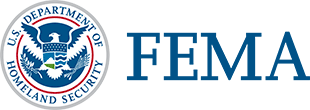On this page you will find information about the Federal Radiological Preparedness Coordinating Committee (FRPCC) with links to materials, contacts and training.
Overview
Under existing regulations, the Federal Radiological Preparedness Coordinating Committee (FRPCC) is now composed of 20 federal departments, agencies and offices that work together to assure that the United States is safe from radiological incidents, involving nuclear or radioactive materials, including acts of terrorism.
The FRPCC is a national-level forum for the development and coordination of radiological prevention and preparedness policies and procedures. It also provides policy guidance for federal radiological incident management activities in support of state, tribal and local government radiological emergency planning and preparedness activities. The FRPCC is an interagency body consisting of the coordinating and cooperating agencies discussed in this Nuclear/Radiological Incident Annex, chaired by DHS/FEMA.
The FRPCC coordinates research-study efforts of its member agencies related to state, tribal and local government radiological emergency preparedness to ensure minimum duplication and maximum benefits to state, tribal and local governments. The FRPCC coordinates planning and validating requirements of each agency, reviewing integration requirements and incorporating agency-specific plans, procedures and equipment into the response system.
As part of their preparedness for nuclear/radiological emergencies, federal agencies participate in exercises to test and evaluate response plans.
Materials
The Nuclear/Radiological Incident Annex (NRIA) to the National Response Framework (NRF) describes the policies, situations, concepts of operations, and responsibilities of the Federal departments and agencies governing the immediate response and short-term recovery activities for incidents involving release of radioactive materials to address the consequences of the event. These incidents may occur on Federal-owned or -licensed facilities, privately owned property, urban centers, or other areas and may vary in severity from the small to the catastrophic. The incidents may result from inadvertent or deliberate acts. The NRIA applies to incidents where the nature and scope of the incident requires a Federal response to supplement the State, tribal, or local incident response. The NRIA is currently under revision and will be reissued as an annex to the Response and Recovery Federal Interagency Operational Plans.
The Communicating During and After a Nuclear Power Plant Incident June 2013 provides communications guidance for domestic nuclear power plant (NPP) incidents, including sample text and suggested answers to anticipated public and media questions. This document also provides background information explaining roles and responsibilities across all levels of government during an NPP incident. While primarily created for federal leaders who will speak to the public, this document should also complement the routinely exercised communication materials used by state, local, and tribal officials.
Improvised Nuclear Device Response and Recovery: Communicating in the Immediate Aftermath is a resource for emergency responders and federal, state, local, tribal, and territorial officials communicating with the public in the immediate aftermath of an improvised nuclear detonation in the United States. An interagency group of federal communicators and radiation technical experts developed the messages in this document. Participating federal agencies include the U.S. Department of Agriculture (USDA), Centers for Disease Control and Prevention (CDC), Environmental Protection Agency (EPA), FEMA, Food and Drug Administration (FDA), Department of Energy (DOE), National Nuclear Security Administration (NNSA), and U.S. Department of Homeland Security (DHS).
